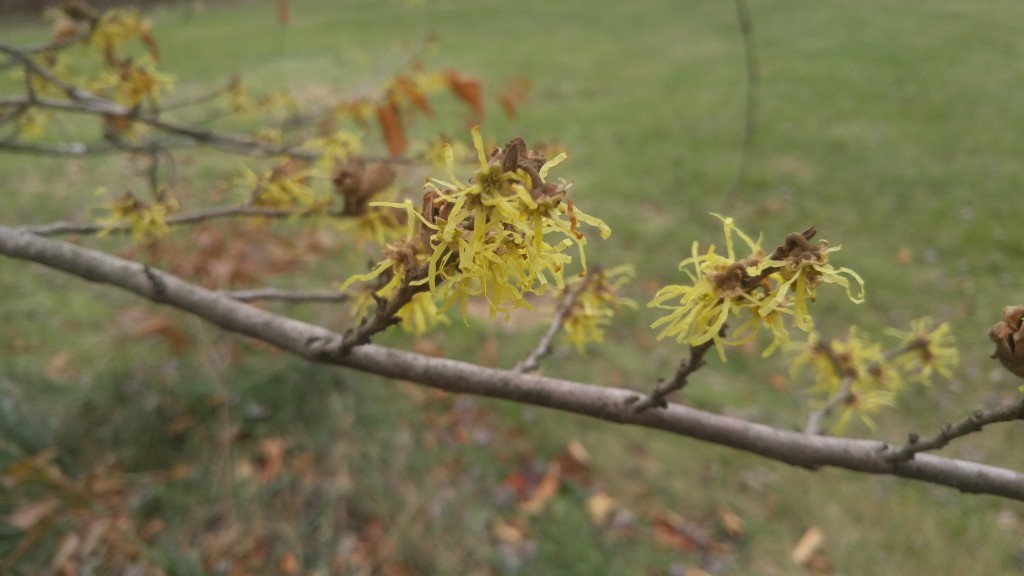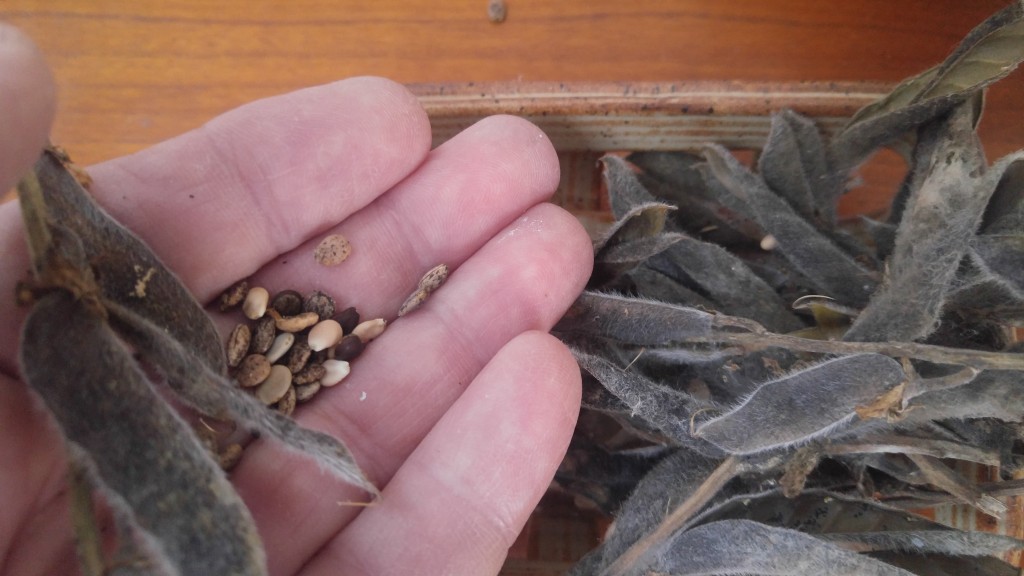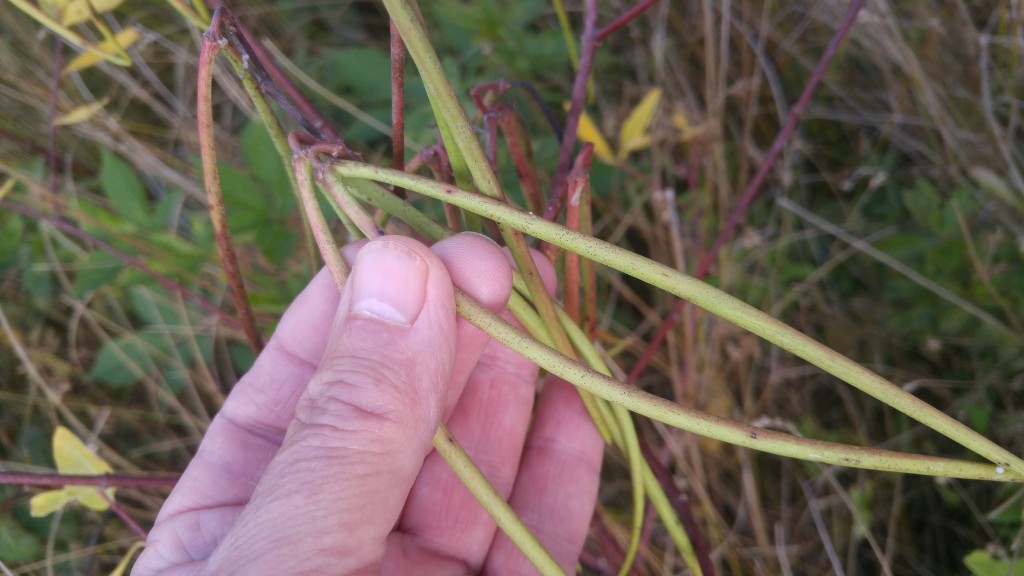By the time mid-November in Michigan rolls around you’d think that we’ve seen the last of blooming plants until spring, that’s what I though anyway. Once again, I forgot all about our witch hazel bush that started blooming a week or so before Thanksgiving.
Witch hazel is a native plant in our area. Back when I was a kid I used to see them along the edge of the woods near our house and wonder; are those spidery-looking yellow things on that bush really flowers?
Like many other plants, witch hazel flowers are pollinated by insects, despite the fact that November is not the biggest month for insects in Michigan. With this warm November we’ve been having, there has to be a lot more insects around to pollinate the flowers. Maybe that will result in a larger than average crop of witch hazel seeds.
Although pollination happens this time of the year, the seeds don’t start to grow until spring. They are produced in easy-to-see, green, capsule-like structures that form where the flowers were. Later in the summer as the capsules turn brown and ripen, the seeds are explosively ejected up to 30 feet away. I’ve never had a chance to see this in person but might one of these days since our shrub is right next to the deck.
Witch hazels grow very slowly, the one in our yard is about eight feet tall and has been there for almost 15 years. That can be an advantage in smaller yards since they rarely get too big for a space and out-grow their welcome. They can get up to 20 feet tall but I’ve never seen one taller than around 12 feet in our neck of the woods.
Plant nurseries and garden centers sell potted witch hazel. But be aware that they often offer the imported Japanese witch hazel or Chinese witch hazel, both of which bloom in late winter rather than in the fall.
Bob


